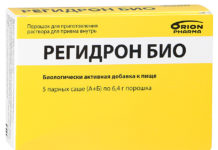A spicy plant is added to vegetable salads, first and second courses to improve the taste. Fragrant parsley, whose beneficial properties are appreciated in cooking, is no less important in traditional medicine and cosmetology. Leaves, roots and seeds contain a complex of active components that affect the functions of the body.
Material Content:
Useful and healing properties of parsley

The main physiologically active substances are unevenly distributed in the aboveground and underground organs. The roots, unlike the green mass, are devoid of chlorophyll.
Nutrition and Vitamin Value
Green leaves and stems of parsley weighing 100 g contain 4.4 g of carbohydrates, 0.9 g of protein and 0.17 g of various fats. Dietary fiber in the same amount of greenery - 2.1 g. Parsley seeds are richer in essential oils (2–6%) and fatty oils (22%), flavonoic glycosides. Flavonoids, known for their antioxidant effect, are found in all parts of the plant. In the roots there is a bioflavonoid apigenin (anticancer agent).
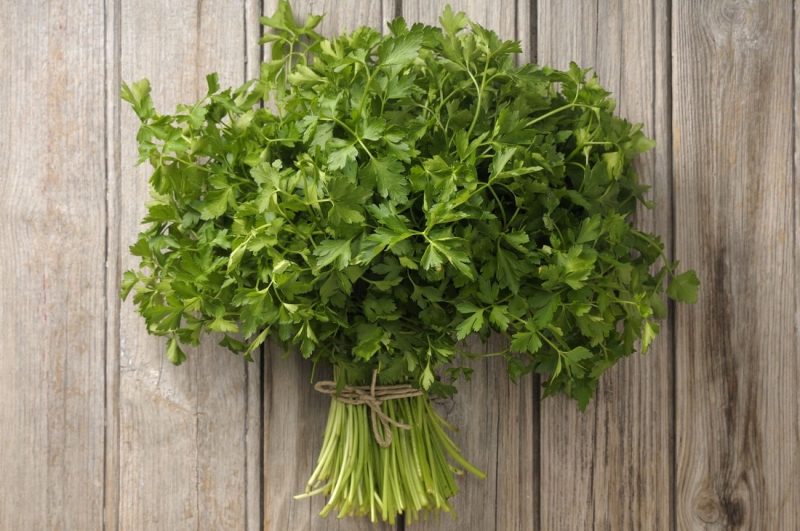
100 g of juice contains 950 mg of provitamin A (more than in pumpkin), vitamin C - 150 mg. Also present are vitamins of group B, PP. Beta-carotene in parsley is a precursor of vitamin A. It is a strong antioxidant substance, a stimulant of the functions of the immune system. Vitamin C prevents the pathological effect of free radicals, strengthens the vascular walls, accelerates metabolic processes.
Potassium, calcium, magnesium, fluorine in the composition of the plant are necessary for the work of the heart, the formation of the skeleton, and teeth.Every 100 g of fragrant herbs supply the body with up to 90% of the daily iron intake, which is important to replenish blood loss, to eliminate the effects of iron deficiency anemia.
Parsley: medicinal properties and application
In folk medicine, grass plants and seeds are used for kidney and heart disease. An infusion made from aboveground parts is prescribed for high blood pressure. Leaves, fruits (seeds), root crops are used as a diuretic in edema. Often, other diuretic plants are added to enhance the effect.
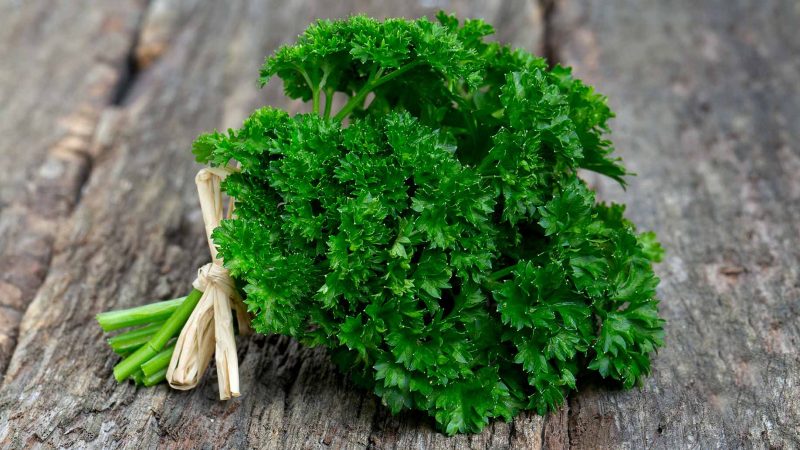
The healing properties of parsley:
- detoxification;
- antispasmodic;
- antiseptic;
- choleretic;
- diuretic.
The therapeutic use of a spicy plant is indicated for many diseases as an adjunct to medications, usually under the supervision of a physician.
Gastrointestinal pathologies that are treated with parsley:
- pain in the liver and gall bladder;
- functional dyspepsia;
- digestive disorders;
- flatulence.
Parsley is used for acute inflammation of the bladder, with chronic cystitis. The active substances of the seeds are useful for inflammation of the urinary tract and pain caused by spasms of the smooth muscles of internal organs.
What are the benefits for the female body
To achieve a healing effect, it is not enough to use parsley as a seasoning for food in normal doses. With gynecological diseases, it is recommended to use infusions and decoctions of leaves, root. Phytoestrogens and other active substances are useful for the reproductive system, relieve pain and cramps in PMS. A plant rich in calcium helps prevent osteoporosis - a climacteric companion.
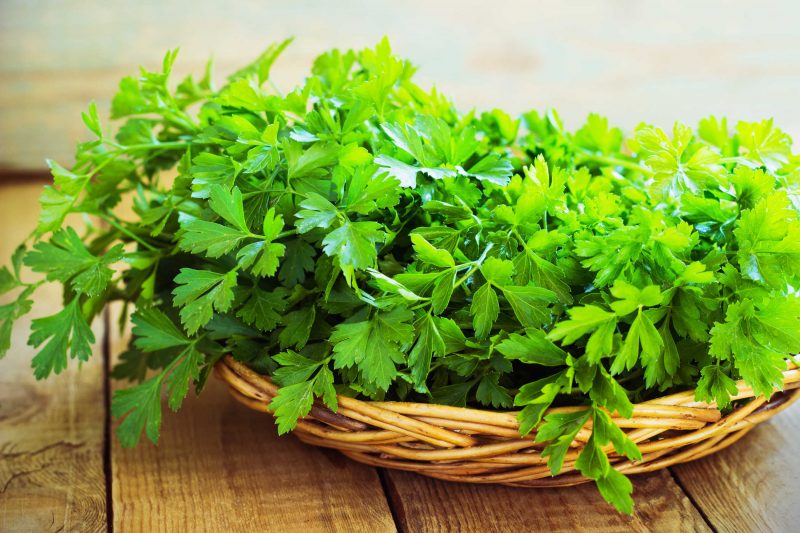
Parsley decoction helps with violations of the monthly cycle and heavy menstrual bleeding.
During pregnancy, the consumption of fragrant herbs is safe (in normal doses). You can drink tea from the leaves to reduce the symptoms of toxicosis. You should be wary of seed preparations, since when combined with other adverse factors, the risk of miscarriage increases. In the Middle Ages, seeds were used to stimulate labor, since apiol in their composition causes uterine contractions.
For men
Parsley has a positive effect on the reproductive system of the male body. The regular addition of fresh greens and root to food has a beneficial effect on the functioning of the sex glands and potency. Trace elements, especially zinc, are needed to increase testosterone production.
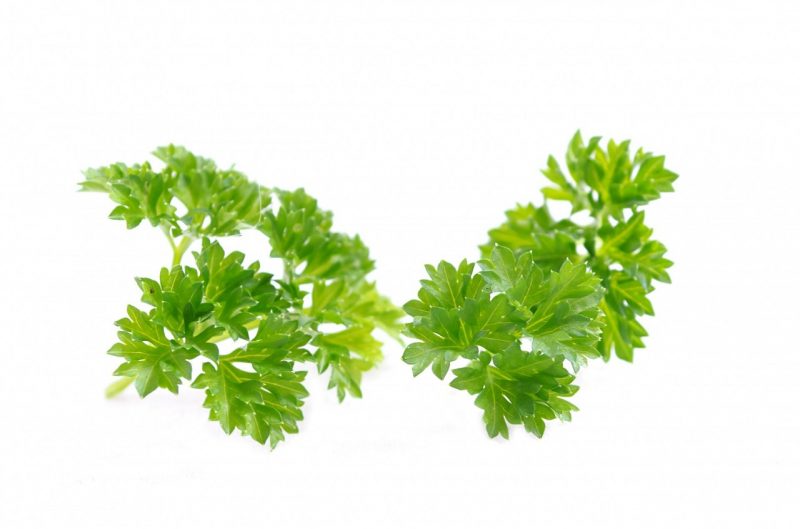
Folic acid and other vitamins in a plant are beneficial for sperm formation. The following are recipes for decoctions of seeds and root, recommended by traditional medicine for the prevention and treatment of inflammation of the prostate gland.
For children
The use of fresh herbs helps the baby's body to make up for the deficiency of vitamins, and more effectively fight against infectious diseases. The active substances of the plant eliminate harmful fermentation in the intestines, remove toxins from the body. Flavonoids enhance the secretion of saliva, which helps improve digestion.
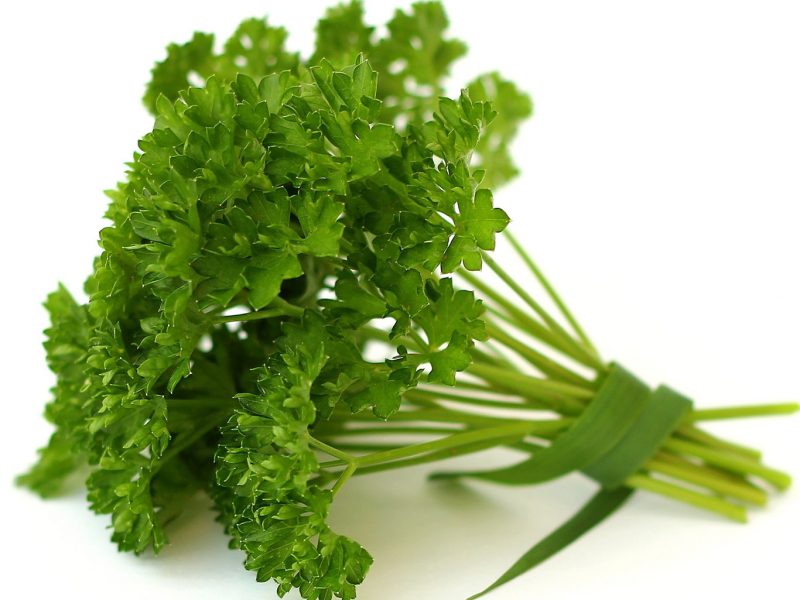
With digestive disorders, bloating give the child a drink of tea made from 1 tsp. leaves brewed with a cup of boiling water. The solution should be infused for about 5-8 minutes, then it is passed through a strainer. It is recommended to take tea twice a day.
The benefits of seeds, parsley root
Ripened fruits with two seeds accumulate a significant amount of essential oils with antispasmodic action. The tool is used to treat gastrointestinal diseases, in particular, gastritis with increased production of hydrochloric acid, ulcerative lesions of the stomach. Parsley seeds are used as a decoction for dyspeptic disorders.
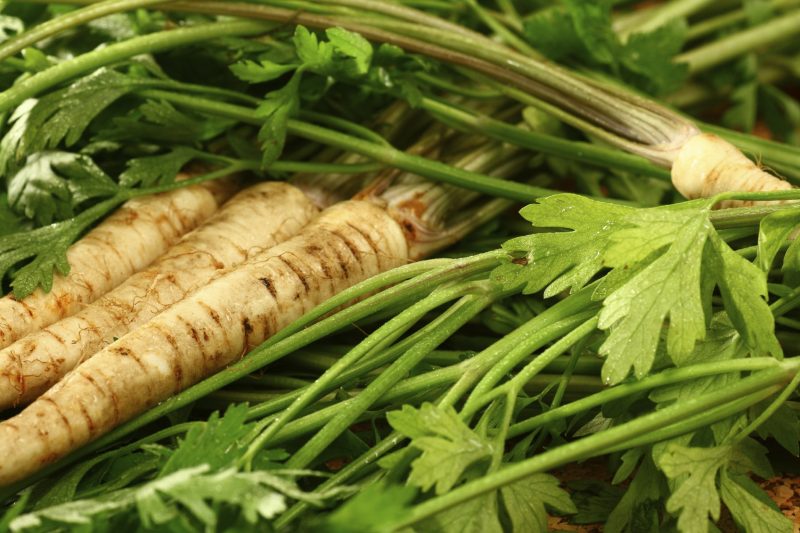
What are the medicinal properties of parsley root:
- anti-inflammatory;
- immunomodulatory;
- anticonvulsant;
- antimicrobial;
- regenerative;
- firming.
With gingivitis and stomatitis, a decoction of the root or seeds is used to rinse the mouth. Chewing a piece of freshly peeled root vegetable helps to eliminate odor from the oral cavity.
A decoction of the root and seeds is used externally to treat allergic rashes, reduce the activity of the sebaceous glands of the skin. Prepare funds for folk recipes, the following.
The healing properties of juice, parsley decoction
A green drink from leaves and stems is rich in vitamins, is quickly absorbed, stimulates energy metabolism, and normalizes acid-base balance. You can drink juice half an hour before any meal. The drink is useful for the work of the heart, the functions of the thyroid gland and adrenal glands.
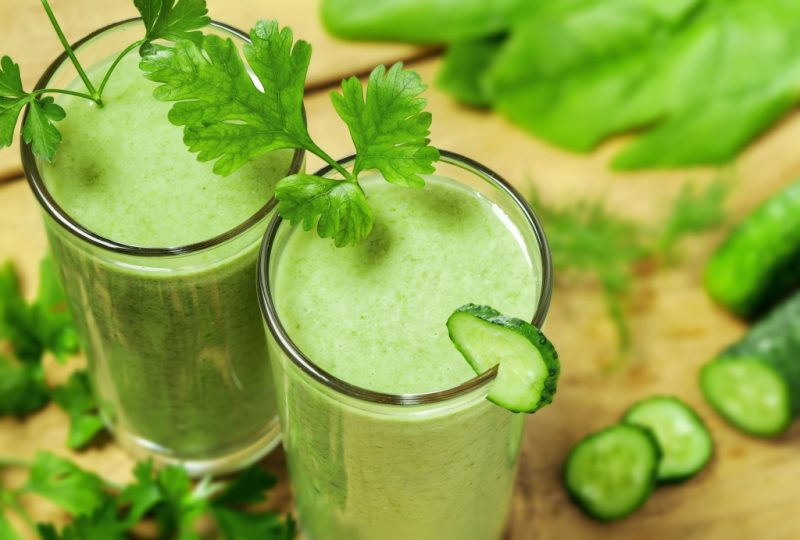
A mixture of parsley and carrot juices in a ratio of 1: 3 is better absorbed. At one time, 1 tbsp is enough. l At the end of winter and the beginning of spring, when the supply of vitamins to the body decreases, juice made from parsley, lemon, grapefruit and orange is taken. The ingredients are taken in equal amounts, crushed using a blender.
Juice and water decoctions obtained from the green parts of parsley can be used to treat cardiovascular diseases, gout, osteochondrosis, arthritis (along with medications). The active substances of the plant help to remove uric acid compounds from the joints and cartilage. The stones in the gall bladder and kidneys gradually dissolve, the number of cholesterol plaques in the vessels decreases.
All parts of parsley can be used to treat cholecystitis, pancreatitis, reduce high blood pressure, and get rid of constipation of non-infectious origin. Plant preparations contribute to the relief of the inflammatory process in chronic cystitis, slow down the growth of a colony of pathogenic microbes, and reduce pain. For many diseases, parsley is used as part of herbal preparations.
Traditional medicine recipes
The diuretic effect of parsley is used to treat kidney stones, urinary tract infections, and edema. Accepted during the day infusion of fresh or dried leaves of the plant. Prepare a tool from 250 ml of boiling water and 2 tsp. raw materials. Brew, insist 10 minutes. Up to 4 cups of such a drink are consumed daily.

Parsley decoction is used for hormonal imbalance and metabolic disorders, with kidney stones. The product stimulates digestion, reduces pain during cramping in the abdomen, and helps prevent osteoporosis.
Ingredients for decoction of parsley herbs:
- shredded leaves with petioles - 2 tbsp. l .;
- boiling water - 500 ml.
Cooking:
- The raw material is poured with boiling water.
- In a water bath, heat for 5 minutes.
- After cooling, the solution is filtered.
- Broth take 1 tbsp. l 15–20 minutes before each meal.
- You can add a spoonful of honey.
Traditional medicine offers several recipes for infusion or decoction of seeds. One of them does not require heating. Mix 1 tsp. seeds and 2 cups of cold water. The ingredients insist for 8 hours. Take 2-3 tbsp. l every 2 hours.
Ingredients for decoction of parsley seeds (second recipe):
- dry seeds - 1-2 tsp;
- water - 250 ml.
Application:
- Pour the seeds with boiling water.
- Heated on low heat for no more than 3 minutes.
- Cover the dishes with a lid and leave for insisting for half an hour.
- Broth take 1 tbsp. l 2 or 3 times a day before meals.
A complex of biologically active substances of a juicy root crop can help in the treatment of various diseases of the internal organs, increase resistance to infections. The raw materials are thoroughly washed and crushed before brewing.
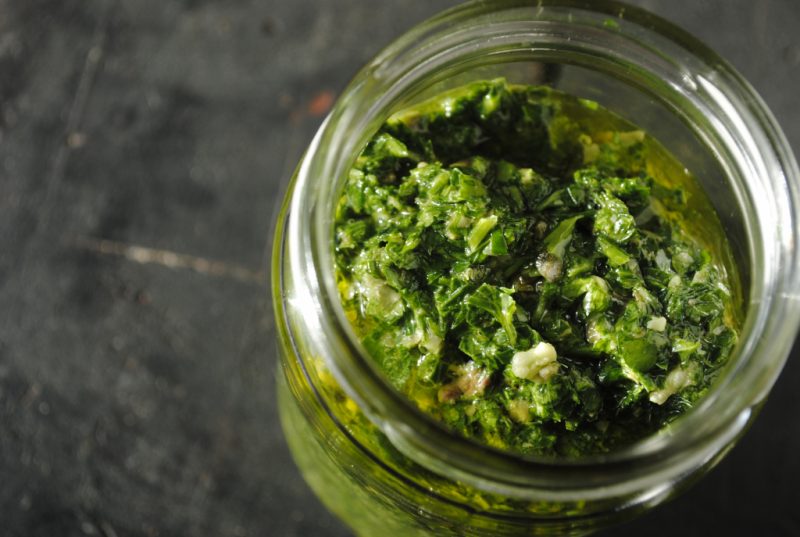
Ingredients for Infusion:
- chopped parsley root - 2 tsp;
- boiling water - 250 ml.
Application:
- Pieces of root in a thermos are brewed with boiling water.
- Insist 40 minutes.
- Filter the solution.
- Take 1 tbsp. l funds 3 or 4 times a day.
In place of edema put gruel from the leaves of parsley and leave for half an hour. Then wash off with water. The procedure is performed daily.You can apply a pounded sheet to the places of bites of bees, mosquitoes, wasps. The tool well removes pain and swelling of the skin.
Beauty Application
Root juice is wiped on the face in the morning and evening to narrow pores, get rid of oily sheen, and prevent the formation of acne. Manufacturers add parsley extract to creams, lotions, and face masks. Such preparations whiten the skin. Also, the role of the plant in the field of cosmetology is the ability to smooth out scars and lighten age spots.
Whitening properties are manifested when using fresh juice at home. Ground fresh and dry leaves, parsley broth are added to homemade cosmetic masks, creams. Compresses with herbs are used to care for thin skin around the eyes. Using a decoction to rinse your hair helps get rid of dandruff.
How to use greens for weight loss
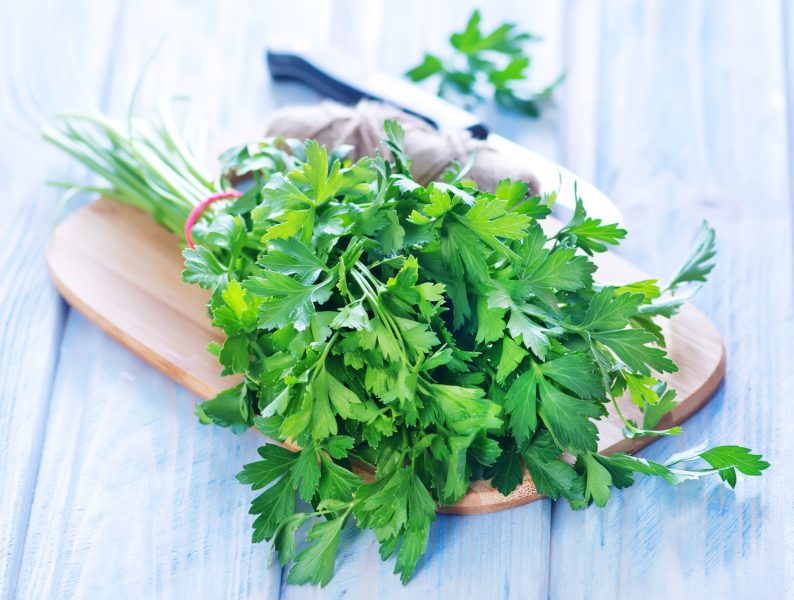
Parsley can be bought at the supermarket, or grown on the windowsill. Greens are well preserved in frozen and dried form. For weight loss, the whole plant is used, but the aerial part is more often used. One teaspoon of leaves and stalks crushed in a blender contains only 4.9 kilocalories, 1 cup (200 ml) - 98 kcal.
Parsley juice is consumed on fasting days. The green drink is very concentrated, so it is diluted with water or other juices. Helping you lose weight every night drinking a drink made from the juice of half an apple, ½ cup parsley and 4 root vegetables of carrots.
Parsley decoction also contributes to the fight against excess weight (in combination with other methods and means). Prepare a solution of 1 tbsp. l greens and 250 ml of boiling water. Raw materials are brewed, heated for 2 minutes over low heat. Take 60 ml three times a day before meals. You can take the same amount of parsley infusion in the morning on an empty stomach.
Contraindications
All parts of parsley, especially seeds and root, are not intended for the treatment of acute forms of kidney and urinary tract diseases: nephritis, renal failure, cystitis, pyelonephritis. Decoctions and infusions are not used at all stages of pregnancy.
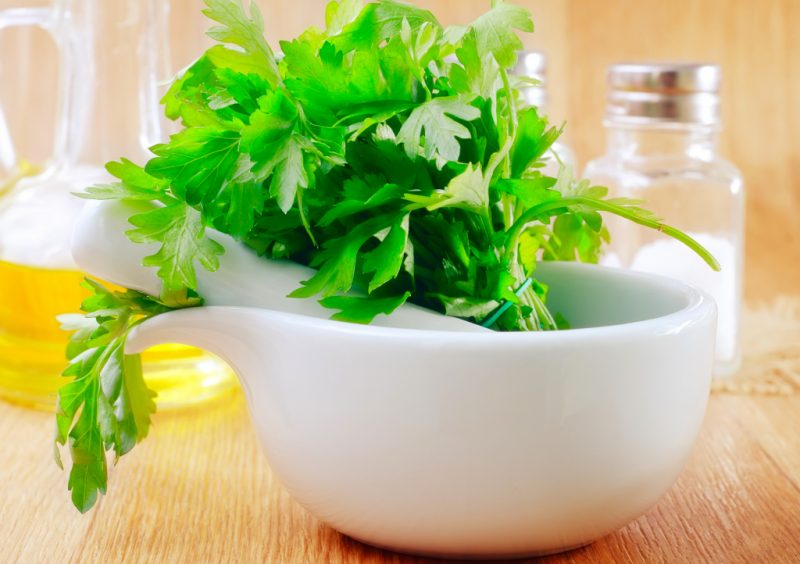
The main contraindications for taking any dosage forms of parsley are individual sensitivity to the plant and intolerance to individual biologically active substances in its composition.
Harmful over-enthusiasm for seed preparations that contain a significant amount of essential oils. You should also pay attention to product quality. On the leaves should not be spots, yellowness. A benign root has a white color, the stem is hard and juicy.







